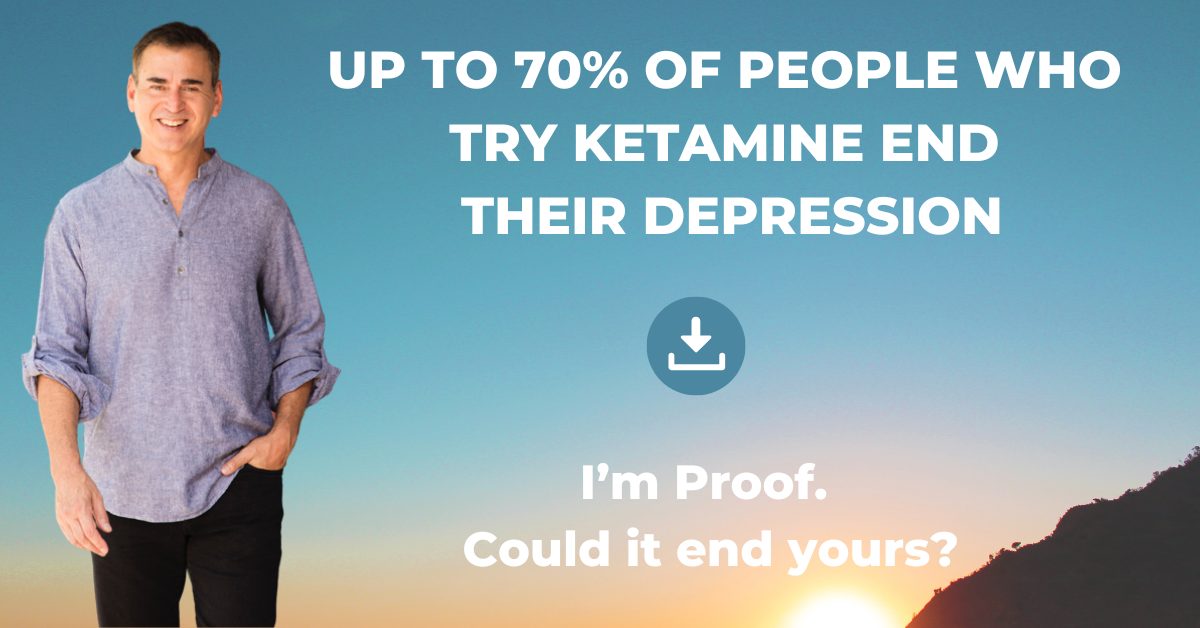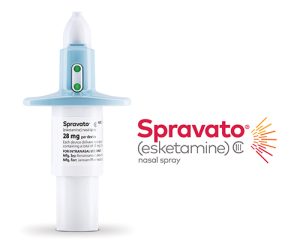Why Does Spravato Offer Such Substantial Subsidies?
When Janssen Pharmaceuticals (now a division of Johnson & Johnson) launched Spravato, they weren’t just marketing a nasal spray—they were introducing a new kind of treatment for depression. But with a hefty price tag and stiff competition from IV ketamine, which is 3 to 5 times more effective, they faced a challenge: how to get patients to choose Spravato over alternatives. Especially since, even with insurance, the out-of-pocket costs for Spravato were still higher than paying the full cost of IV infusions out of pocket.
The answer came in the form of substantial subsidies for patients with commercial insurance, drastically reducing out-of-pocket costs and making themselves vastly cheaper than IV ketamine, which studies show is a vastly superior treatment. While this might seem overly generous, it’s also a calculated business strategy.
Maximizing Market Penetration
Spravato’s cost without insurance is daunting, running thousands of dollars per treatment. Even with insurance covering 50–60%, patients are often left with over $8,000 out-of-pocket expenses. For many, that’s enough to look elsewhere—like IV ketamine infusions, which, though typically uncovered by insurance, often cost less per session than Spravato’s uncovered portion.
The subsidies change this equation. By covering a substantial portion of the patient’s out-of-pocket costs, Janssen removes the financial barrier that might otherwise discourage people from trying Spravato. This increases the likelihood that patients will not only start but continue treatment, effectively boosting adoption rates.
Leveraging Insurance Payments
While patients see their out-of-pocket costs slashed, insurance companies still foot a significant portion of the bill. For every treatment administered, insurers typically cover 50–60% of the total cost, which can range from $600 to $1,200 per session.
From Janssen’s perspective, the subsidy is a means of ensuring these insurance payments keep coming. If patients balk at high out-of-pocket costs and abandon treatment, insurance companies might reassess their willingness to cover Spravato at all. High patient adoption, subsidized or not, reinforces the drug’s perceived value to insurers, making it more likely that coverage will remain stable or even expand.
This dynamic is critical because Spravato relies on insurance coverage to maintain its position in the market. Without insurance companies reimbursing a large portion of the cost, the drug’s price would make it virtually inaccessible to most patients. By subsidizing patients directly, Janssen ensures a steady flow of revenue from insurance reimbursements, which more than offsets the cost of the subsidies.
Encouraging Long-Term Use
Spravato isn’t designed to be a one-and-done treatment. Patients typically begin with twice-weekly sessions, tapering to once-weekly or bi-weekly maintenance doses over time. For Janssen, this means every new patient represents a potential long-term revenue stream.
Offering subsidies lowers the barrier for entry, making it easier for patients to start treatment. Once they’ve begun and experienced some relief, they’re more likely to continue. Patients who initially benefit from Spravato often remain on maintenance doses for months or years, creating a steady flow of insurance reimbursements.
This strategy is particularly effective for a treatment like Spravato, where ongoing use is part of the therapeutic model. The initial subsidy isn’t just a gesture of goodwill—it’s an investment in long-term patient loyalty and revenue.
Positioning Against IV Ketamine
IV ketamine is Spravato’s biggest competitor. It’s cheaper on a per-session basis, widely available at private clinics, and has a decades-long track record of efficacy. However, IV ketamine is rarely covered by insurance, leaving patients to pay out of pocket entirely.
Janssen’s subsidy strategy positions Spravato as the more affordable option, at least for patients with commercial insurance. Even though the overall cost of Spravato is higher, the subsidies make it feel more accessible, shifting patient perception.
For patients who are already struggling financially due to the burden of depression and treatment costs, this matters. The idea of paying little to nothing for a cutting-edge therapy is compelling, even if the insurance company absorbs most of the cost. By reducing out-of-pocket expenses, Janssen narrows the gap between Spravato and IV ketamine, giving patients a reason to choose the FDA-approved nasal spray over the off-label infusion.

MY PERSONAL EXPERIENCE
I feel completely torn about Spravato. On one hand, I’m profoundly grateful. I was so broke that ketamine therapy in any form was completely out of the question. Then I found out that, thanks to Johnson & Johnson’s subsidy program and my insurance, I could access Spravato for almost nothing out of pocket. Spravato didn’t just keep my depression at bay—I hit full remission in six weeks (you can read my story here). Not struggling to manage symptoms or barely keeping my head above water, but remission. My depression ended. For that, I can’t overstate my appreciation.
But here’s where it gets complicated. That gift—the subsidy, the remission—came from a company whose strategy feels predatory. Spravato’s subsidies make it accessible to people like me, but they also function like a Trojan horse. By gaining FDA approval, Spravato becomes the “legitimate” ketamine option while IV ketamine—often cheaper and, by many accounts, more effective—gets painted as inferior or risky because it’s not FDA-approved for depression. It’s brilliant corporate strategy, but it feels designed to crush the competition and monopolize the market, even if it means making better treatments seem untrustworthy.
So here I am, caught between gratitude and frustration. On one side, I owe my remission to a treatment I could afford only because of these subsidies. On the other, I can’t shake the feeling that I’ve been helped by a predator—a company that’s using its FDA approval and subsidies not just to help people, but to make sure their better competitors are pushed out of the picture. It feels like a gift wrapped in a strategy to dominate the field, and that leaves me deeply conflicted.
Creating a Patient Pipeline
Subsidies don’t just help individual patients—they create a pipeline. By lowering financial barriers, Janssen encourages more people to start treatment, knowing that many will transition to long-term maintenance regimens. This pipeline ensures a consistent flow of patients, which is crucial for securing insurance contracts and maintaining profitability.
Once patients are in the system, they’re more likely to continue. Stopping Spravato often means risking a relapse, and the familiarity of the treatment—along with insurance coverage—makes it easier to stay than to switch to alternatives like IV ketamine. Janssen’s investment in the form of subsidies essentially “locks in” patients, creating a reliable revenue stream over time.
Mitigating Negative Public Perception
Spravato’s high list price has been a point of contention since its launch. Critics argue that it’s prohibitively expensive, especially compared to off-label IV ketamine, which is often cheaper and has a longer track record of success. For Janssen, this backlash represents a risk—not just to Spravato’s reputation but to its adoption and profitability.
Subsidies serve as a buffer against this criticism. By significantly reducing the financial burden on patients, Janssen shifts the focus away from Spravato’s list price and toward its accessibility. Patients who might otherwise view the treatment as unaffordable are more likely to see it as a viable option, thanks to the subsidies.
From a public relations standpoint, this approach positions Janssen as patient-friendly. The company can highlight its commitment to making innovative treatments accessible, even as it maintains Spravato’s high pricing structure. For patients and providers, this narrative helps counter the perception that Spravato is simply a profit-driven product.
Protecting Market Perception Against IV Ketamine
Spravato isn’t just competing against IV ketamine on efficacy—it’s also battling a perception problem. IV ketamine clinics are often seen as more affordable and patient-centered, with many offering personalized care and dosing. Patients who choose IV ketamine frequently report faster and more consistent relief compared to Spravato, creating a compelling argument for its use.
However, IV ketamine is rarely covered by insurance, leaving patients to pay out of pocket. Janssen leverages this disparity by using subsidies to position Spravato as the more accessible option for insured patients. Even if the total cost of treatment is higher, the immediate financial burden on patients is often lower, thanks to these subsidies.
This strategy doesn’t just make Spravato more competitive—it also helps protect Janssen from the growing popularity of IV ketamine. By addressing the affordability gap, Janssen ensures that Spravato remains a viable choice for patients who might otherwise turn to IV ketamine clinics.
Balancing Criticism and Profit
Subsidies also allow Janssen to navigate a delicate balance between profitability and public perception. Without these financial assistance programs, Spravato’s high list price would likely deter many patients, reinforcing the narrative that it’s an inaccessible, profit-driven product.
By offering subsidies, Janssen creates a counter-narrative. The company can argue that it’s working to make cutting-edge treatments available to as many people as possible, even as it maintains a pricing structure that ensures long-term profitability. This dual approach helps Janssen mitigate criticism while protecting its bottom line.
At the same time, the subsidies help Janssen maintain leverage in negotiations with insurers. High patient adoption rates demonstrate the value of Spravato, making it easier for Janssen to secure favorable reimbursement rates. This ensures that the company continues to generate significant revenue from each treatment, even as it reduces patients’ out-of-pocket costs.
Building Goodwill for the Future
Janssen knows that the mental health field is rapidly changing. New treatments and competitors are emerging, and public demand for affordable, accessible care is growing. The subsidies aren’t just about Spravato—they’re about building goodwill that can carry Janssen into the future.
By positioning itself as a patient-centered company, Janssen strengthens its reputation, not just for Spravato but for its broader portfolio of treatments. This goodwill can translate into increased trust from patients, providers, and insurers, creating opportunities for future growth and innovation.
In the meantime, the subsidies serve their immediate purpose: increasing patient uptake, protecting Spravato’s market position, and ensuring long-term profitability in a competitive and rapidly evolving field.
Thinking of Trying Ketamine Therapy but Don’t Know Where to Start?

My ketamine and depression guide takes you step-by-step through the entire journey

